Bedouin special forces
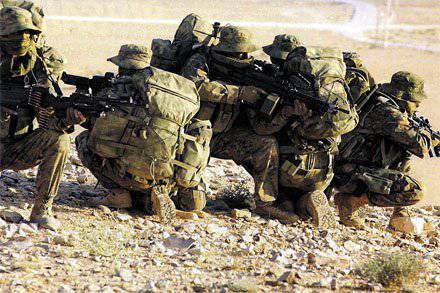
The paradox of military conflicts in recent years is that global and regional superpowers who use the most up-to-date weaponstealth aircraft made using the Stealth technology create the most modern armored forces and high-tech communication systems, detect and direct ammunition on a target with a laser beam, and can be stumped by poorly armed but highly motivated rebel forces. They, as it turned out, are able to quite successfully fight with a skillfully trained, disciplined and well-managed regular army. Fast and highly maneuverable vehicles, reinforced with additional armor, the main combat Tankscapable of withstanding the most powerful enemy ammunition, it is now easy, like cans, to be opened by powerful improvised explosive devices (IEDs) hidden underground. At the same time, these IEDs are based on a charge of explosives, the ingredients for the manufacture of which can be bought in a store, and a remote fuse is triggered when a cell phone signal is received. The rebels, who successfully operated in Afghanistan and Iraq, followed the fifth generation philosophy of the war, which was aimed at undermining state infrastructure and destroying religious beliefs.
Inadequate opposition
The modern rebel strategy is at least fairly simple, but at the same time very effective. Its essence is to conduct a coordinated double strike in the form of leading popular guerrilla actions simultaneously with large-scale terrorist activities aimed at demoralizing the general public. International global terrorism emphasizes the flexibility and perseverance of modern-day rebels. Their ability to threaten the government can not be taken seriously. And global reach cannot be easily eliminated.
The Western response to this threat, which was an attempt to redefine the nature of the war, was largely reactionary and defensive in nature. For example, initiatives such as the development of mine and anti-ambush vehicles (Mine Resistant Ambush Protected - MRAP) in the United States were measures designed to allow units to operate from cars while safe, while the rebels mastered the theater of operations. Other countries also tried to find similar solutions, implementing programs that cost billions of dollars and require years of planning and implementation.
Challenges of the present
Jordan, which is often referred to as the “oasis of peace”, is in a region where conflicts are quite commonplace. In this turbulent time for the Middle East, King Abdullah II is forced to pay particular attention to the modernization of the Jordanian armed forces and their ability to cooperate harmoniously with other Jordanian units. Considering the participation of the armed forces of the Kingdom of Jordan in the UN operations and the implementation of humanitarian missions, the most serious attention is paid to working out cooperation with armed units of friendly nations when deployed outside the country. Amid the exacerbation of the political situation in North Africa and the Middle East, Jordan is ready to give a decisive response to the military reality of fifth-generation tactics, which are increasingly manifesting themselves in this region.
Jordan response
Jordan’s response was the creation of the 61 Special Intelligence Regiment (61 Special Reconnaissance Regiment - 61 SRR).
The 61 regiment is a unit capable of conducting reconnaissance and surveillance both explicitly and secretly. The main task of the use of regiment groups is to deliver pinpoint strikes that demoralize the enemy, which makes it possible to ensure dominance in the given territory and exercise control of the theater of military operations in the interests of large military formations.
Also, soldiers and officers of this military unit can participate in ensuring the security of high-level Jordanian officials and its guests. By virtue of the peculiarities of the tasks facing the regiment, this small in number subdivision falls outside the traditional framework of subordination. Having a very high level of professional training, the soldiers of the regiment can be quickly transferred to the desired area to respond to the changing situation and accomplish any assigned task. It is also worth focusing on the fact that for its implementation the units of the regiment attracted significantly smaller forces than ordinary military formations.
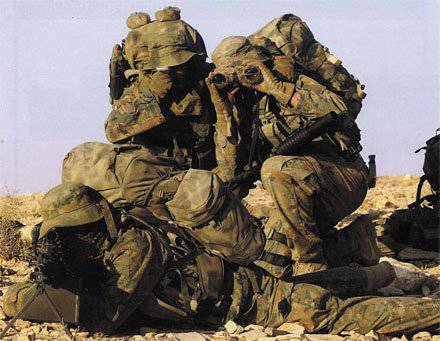
According to the king's plan
The 61 regiment is the embodiment of King Abdullah II’s plan. The king of Jordan, before ascending the throne in 1999, served in the armed forces of the kingdom and made an excellent military career, becoming also the head of the command of the special forces of Jordan.
In order to implement his idea, the king issued a directive on the creation of a new reconnaissance regiment of special operations, which could simultaneously master the "battle space" to gather intelligence information and seek a "joint integral effect", which consists in maintaining accurate fire, which are based on a unique, non-standard plan. Intelligence on the battlefield has long been one of the most technologically advanced types of combat support. Commanders, in deciding whether to carry out a special operation, often rely on modern technologies, such as, for example, aerial reconnaissance, through which the image from the UAV is transmitted in real time to command posts. The use of long-range reconnaissance patrols, directed deep into enemy territory, to gather intelligence information is, in fact, the most important source for commanders, able to observe the target and transmit information to the commander also in real time for immediate analysis. But the Long Range Reconnaissance Patrol (LRRP) was never designed to hit a target when it was detected. The personnel of the intelligence patrols did not have such training.
After discussions about the importance of combat intelligence conducted in the command of special operations of Jordan, at the end of 2006, the 61-th Special Intelligence Regiment was formed.
Theory and practice
In order to combine the theoretical aspects of creating a unit with the military reality, it was decided that the special forces personnel assigned to perform these tasks should be universal and distinguished by their ability to think quickly, along with a high level of practical skills.
The peculiarity of the new formation was the ability to quickly maneuver in order to cause the enemy to effectively defeat with small forces.
One of the main objectives during the formation of the 61 reconnaissance regiment was to provide the command with the necessary information during the battle, allowing him to anticipate the actions of the enemy and concentrate the fire of the means at his disposal on priority objectives.
This methodology emphasizes the need to improve the capabilities of intelligence, observation, target identification, data collection and reconnaissance combined with the potential of the combined integral effect mentioned above. In other words, in modern conditions, intelligence is required not only to detect the object, but also, if necessary, inflict an effective defeat on it.
Of course, in modern conditions one of the most important components of the success of a military formation is its technical equipment. But for the success of any military operation, the human factor is equally important, the ability of the executors to provide command of accurate intelligence data in real time. And in this regard, Jordan is lucky: the country has a unique human resource - the Bedouins.
Features of picking
For centuries, the Arab Bedouins have wandered south of the Sahara desert in North Africa to the Arabian Peninsula. The ability to move at night and restrict movement during the day due to high daytime temperatures is not easy, as are a number of other skills necessary for survival in the desert. Today, most units of the Jordanian armed forces, and especially special forces, are staffed by Bedouin tribes who live within the borders of the Kingdom of Jordan. The new regiment was no exception.
Feature of application
The 61 regiment specializes in two key aspects of military activity: conducting observation and reconnaissance and targeting artillery firing both direct-fire and closed firing positions. To accomplish these tasks, the regiment must withdraw reconnaissance teams to the area of operation by land or air. Intelligence teams must also be able to covertly move within the designated area.
Regiment units are not only trained in remote target reconnaissance using sniper tactics, but are also capable of collecting detailed intelligence information while conducting hidden reconnaissance of targets.
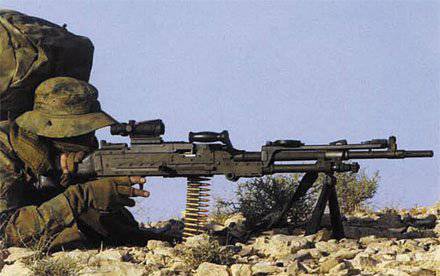
By observing the identified target, a patrol separated from the special reconnaissance 61 regiment, upon receiving the appropriate command or in the event of a change in the operational situation, can quickly move from passive observation to active actions to destroy important operational and strategic goals. One of the most important tasks of the regiment in a combat situation is to neutralize the commanders of hostile rebel formations.
If necessary, the reconnaissance team can put helicopters or jet planes on the target, as well as artillery fire located in closed positions.
A New Look
In preparing the personnel of this unique regiment, the main efforts are directed at training personnel in two key areas: observing and organizing reconnaissance, as well as training high-class snipers. It is modern reality that dictated the strict requirements of Jordan, which consist in the fact that intelligence gathering and sniper fire were linked.
Unlike popular assumptions that the main role of a sniper is to reliably hit targets at long distances with high accuracy, serious tactical doctrines formulate the main function of a sniper as a tool for conducting reconnaissance in real time. It is clear that in tactical situations, ranging from the protection of important persons to direct assault actions in order to support special forces, snipers play a vital, if not the main coordinating role. The fact that a reconnaissance sniper may be engaged in collecting intelligence, while retaining the ability to hit critical targets that are at the ultimate distance, has a definition of "power multiplier" in NATO terminology.
Features of preparation
When King Abdullah decided to create an 61 regiment, the commanders realized that they would have to train specialists who could simultaneously carry out reconnaissance missions and, if necessary, destroy important targets by firing from cover. That is why the staff of the regiment with equal voltage learns to be an expert in both areas. Also, the personnel of the regiment is being trained to conduct traditional combat operations and participate in the fight against terrorists.
In the course of his service, an 61 sniper reconnaissance regiment can now take part in a city operation to neutralize terrorists, and tomorrow as part of a deep intelligence patrol move in the desert to conduct reconnaissance. Flexibility in the use of this unit allows him to quickly change the area of his actions.
Training in sniper art in the 61 regiment is carried out under the program "Suppression of a particularly important target and counter sniper actions" (Interdiction, High Value Target Acquisition and Counter-Sniping - IHV-TACS). In addition, all intelligence officers undergo an intelligence training course.
The most interesting aspect of the activity of the 61 regiment is the large amount of time that is devoted to the development of personal professional skills in field training. The nature of the activities of Jordanian special forces is such that they for a long time and with minimal support act in complete isolation from the main forces.
Challenges and opportunities
In order to fully control the intelligence on the battlefield, the soldiers of the 61 regiment must be able to covertly act in both rural and urban areas. Therefore, in the regiment, ingenuity in the use of various types of camouflage and camouflage is so valuable, the combination of stealth and dexterity in pursuit, patience and endurance when observing are also important.
When performing tasks, of course, the Bedouin traditions and skills of survival in the desert, the ability to act in any environmental conditions, help the soldiers. The landscape of Jordan is a desert in the east, a wooded area in the northwest and a mountain belt that crosses the country from north to south.
Acting in the vanguard, the 61 regiment performs the task of deploying to the main reconnaissance forces and determines their “entry points” to perform the tasks. This small specialized unit can be withdrawn to the area of operation by air, followed by landing on parachutes.
Fighters of the Jordanian Special Intelligence Regiment may also designate a tactical landing zone for airplanes, helicopters, or an airborne landing area and, after completing the mission, rejoin the main reconnaissance forces.
Established structure
There is no exact data on the size and staff structure of the regiment of special intelligence, but at the same time it is known that the 61 regiment consists of the headquarters and headquarters, several reconnaissance squadrons and logistics units.
Each squadron includes several patrols. Regiment patrols are teams of four or six people. Their training programs overlap and therefore each of them has a large set of knowledge and skills, including medical training and knowledge of foreign languages, which allows them to act independently.
Logistics
The birth of the regiment was preceded by a huge research work, designed to create the optimum logistics and technical base of the new division.
King Abdullah showed a personal interest in this topic, so the intelligence officers had the opportunity to purchase the most modern models of equipment and equipment used by the best foreign special forces.
At the initial stage, the special attention of specialists was focused on the search for an effective set of equipment and weapons suitable for performing specific tasks assigned to the 61 regiment. Naturally, it was also taken into account that the special forces often act in isolation from the main forces, completely autonomously.
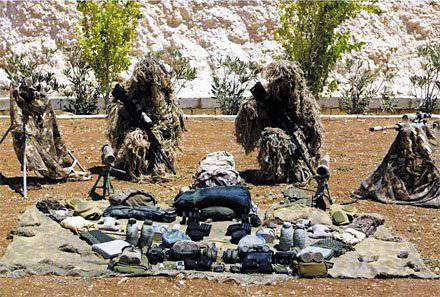
weaponry
The patrols of the 61 regiment are armed with the M4 caliber 5,56 mm and 9-mm Glock 17 pistol. In addition, two fighters are attached to each fighter: the SAKO TRG 22 sniper rifle with manual locking of the caliber.308 shutter and the semi-automatic DPMS LR 308. A special silencer can be mounted on each of the rifles.
Also in the arsenal of the regiment are sniper rifles SAKO TRG 42 caliber.338, rifle McMillan TAC-50, caliber.80 and the same caliber Barrett M82 A1 / M107, as well as anti-tank grenade launchers. The commanders of the 61 regiment believe that the advantage of the basic model of the SAKO sniper rifle is that it has filled the niche between the sniper's guns of the law enforcement agencies and the sniper's weapons of the armed forces.
The rifles listed above are equipped with riflescopes of the Schmidt & Bender family - one of the leaders in the production of daytime riflescopes for the military. The optics of the scopes are so bright that they allow the sniper to identify targets in low light conditions, and the precise parallax adjustment ensures that the target is hit. The introduction of corrections for elevation and air resistance allows for a very accurate shot. The vertical guidance and lateral wind correction mechanisms are precise and precise. The outstanding achievement of these scopes is the beautifully illuminated reticle of the P4 L.
P4 has simple and concise equipment that gives the operator unprecedented accuracy in determining the distance to the target. The exact range can be calculated to the target at any distance if the target is within the effective range of the rifle.
As the unit developed, King Abdullah II constantly paid attention to detail. To the fore, the requirement was put forward that all weapon systems be equipped with Front Focal optics, which allows operators to accurately determine the range to the target at any distance a military sniper needs. Ultimately, Schmidt & Bender daytime riflescopes are the best in the world and allow the sniper to effectively solve sabotage missions on the battlefield.
In addition, to determine the target range, the shelf snipers have at their disposal range finders Leica CRF Rangemaster 1200 Rangefinder and Vectronix PLRF Rangefinder.
Since regimental operators perform tasks at any time of the day, they also have night vision devices in place that allow them to conduct surveillance and reconnaissance at night. For reliable destruction of the target, night sights are at the disposal of snipers. In addition, the regiment's sniper rifles are currently equipped with thermal imaging sights and IR Laser / illuminating Aiming laser designators. The recent introduction of this equipment has increased the capabilities of the unit’s nightly activities.
It is also interesting that the personnel of the regiment in rifle training masters Russian weapons, for example, the Dragunov sniper rifle - the SVD.
The regiment's snipers have at their disposal various Jordanian air force helicopters: UH-60 Blackhawk, MH-6 M Little Bird, AS-332 Super Puma and EC-135 Eurocopter, which can also be used as a platform for sniper fire.
According to some reports, in the 2008, the regiment received new large-caliber semi-automatic rifles, including Accuracy International AS50 and 50 BMG. In addition, the mobility of reconnaissance teams in operations is increased by adopting All Terrain Vehicles (ATVs) - all-terrain vehicles.
Prospection
The 61 th Special Intelligence Regiment was created as a division of the future. When planning the development of his combat capabilities, the task was to meet the requirements of SMART (Specific, Measurable, Achievable, Realistic and working to a Time line), that is, the possibilities laid down in the project should be specific, measurable, achievable, realistic and their achievement should be coordinated by of time.
The regiment was created in order to make changes to the content of special operations in the interests of Jordan. The personnel of special operations forces takes part in modern combat operations and has experience of use throughout the world. The special forces of Jordan took part and supported the UN peacekeeping operations in Bosnia, East Timor, Haiti, Kosovo, Croatia and other areas where humanitarian operations took place.
King Abdullah II constantly visits the special forces of other countries and seeks to adopt the newest and most effective for the implementation of the special forces command in the units of Jordan.
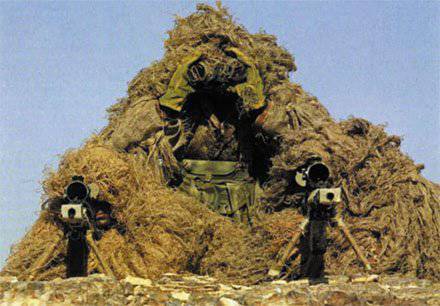
Good personal experience and contacts with colleagues from other departments help to keep up and even overtake the most advanced special forces.
Today, the challenges faced by Jordan are significant: the threat of Al Qaeda terrorist groups, the need to resolve regional conflicts, the strengthening of Islamic fundamentalism and sectarianism in the Middle East. The geographical location of Jordan in the center of the bustling region makes it the number one target for various extremist groups.
Therefore, creating the 61 th regiment of special intelligence, the king believed that the answer to any terrorist challenge should end not only with his unconditional suppression. To solve such problems in modern conditions requires a revolutionary thinking and the use of the most modern experience and capabilities. From the command of the regiment, King Abdullah II, among other things, requires the ability to prevent both internal and external threats at the political and military level.
Jordan hopes that the capabilities of the established unit will be a deterrent to the spread of terrorist danger in the region.
Information